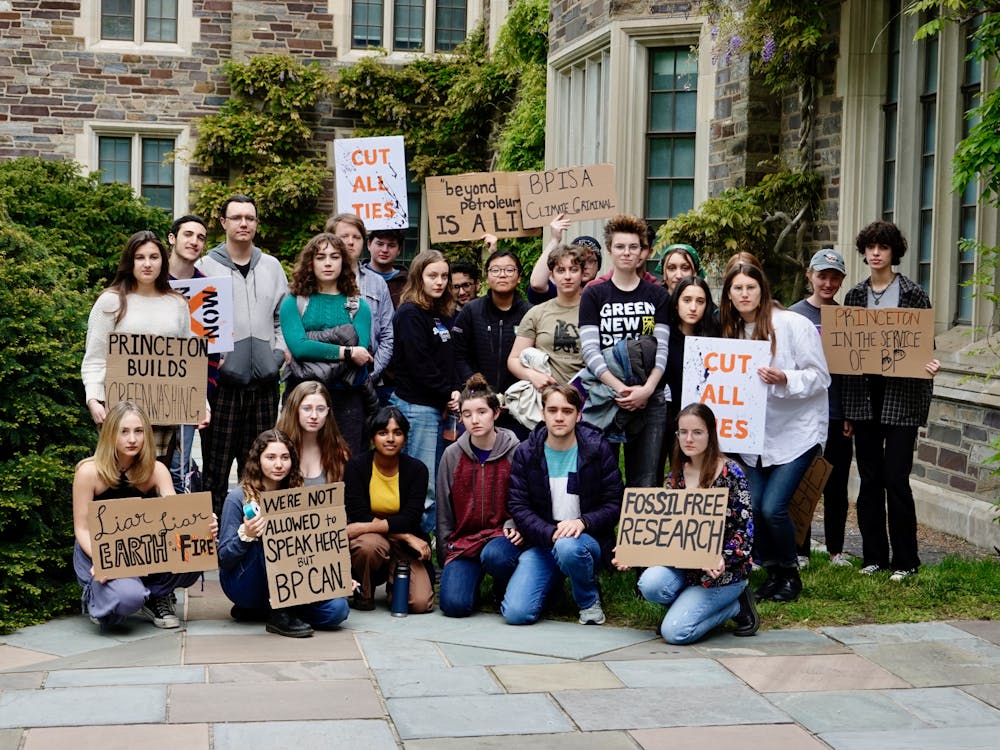Last Monday, the University announced that it would discontinue its sprint football program. Having existed on campus for 82 years, sprint football is an alternative version of football for players weighing under 172 pounds with a minimum of five-percent body fat. There are currently nine remaining schools in the country that field sprint football teams, including Cornell, Penn and West Point. The Board believes that the University should have been more transparent in its decision-making process and that its justification for ending the program is inadequate. Lack of communication with members of the sprint football team and the greater Princeton community regarding the details of the decision has also led to confusion and speculation concerning the reasons for the program’s termination. As a result, we call on the University to releasethe statistics and safety concerns used to justify its decision to end the sprint football program.
In terminating the program, the University cited safety concerns, arguing that sprint football players sustain the most injuries of any varsity athletes at Princeton. These statistics have not been made public, so their transparency is of immediate concern. Furthermore, the sprint football team and head coach Sean Morey have emphasized the primacy of player safety. Morey, a former NFL Pro Bowler and Super Bowl champion, was named co-chair of the NFL Players Association’s Concussion and Traumatic Brain Injury Committee in 2009. He has long been an activist for player safety and consistently sides with caution in reporting the injuries of his players. The Board believes Morey has gone against tradition in football and put player safety at the forefront of his coaching philosophy, which may also explain sprint football’s higher reporting of injury rates.
The University has failed to release any comparative report of injuries sustained between sprint football and heavyweight football. The move to end sprint football, seemingly based in large part on injury rates alone, is also a dangerous precedent for the University to set, since it incentivizes Princeton’s other athletic programs to hide or underreport injuries for fear of similar punishment. Sprint football players are also aware they may sustain injury while playing and consent to such risk. The University allows other athletes to make this same judgement, so it is unclear why injury rates constitute a sufficient reason for ending the program.The University cited a lack of competitiveness as additional justification for ending sprint football. While it is true that Princeton’s sprint football team has not won a game in 17 years, it is also the only program in the Collegiate Sprint Football League that is not afforded recruiting spots by its institution’s admissions office or athletics department. According to current members of the sprint football team and its alumni association, Friends of Princeton sprint football, as few as two to three recruits per year would substantially aid the team’s competitiveness. They note that the team’s losing streak is better explained by its small size and the fatigue incurred by walk-on athletes playing both defense and offense for sixty minutes of every game of the regular season. Supplying these recruiting spots would likely not be zero sum or substantially affect the University’s other athletic programs, many of which are supplied with dozens of slots each year. Furthermore, since President Eisgruber has already announced plans to substantially expand the student body, the University could add recruitment slots without increasing the percentage of varsity athletes. Neither the University nor its Athletic Director responded to requests for comment on Princeton’s athletic recruiting quotas.
It is further worth noting that some of Princeton’s opponents in the Collegiate Sprint Football League do not field heavyweight football teams, giving them a larger pools of athletes from which they may draw recruits. Despite such challenges, Coach Morey, in just his second season as head coach, almost ended sprint football’s 106 game losing streak in the final match of the season against Chestnut Hill. It is clear the sprint football team has potential to be competitive. The University should fix its shortcomings, not abrogate the program entirely.
Finally, regardless of whether sprint football should continue to be played at Princeton, the process through which the University terminated it left much to be desired. Prior to President Eisgruber’s meeting with the team Monday, members of sprint football were only aware of the University’s ambiguous statement that it had been “exploring the future of the program,” giving them little indication it might be ended altogether. According to Vice President of Communications, Daniel Day, no current members of sprint football were consulted on the decision to terminate the program. The University’s treatment of its decision to end sprint football therefore blindsided current players, alumni and students unnecessarily.TheEditorial Boardis an independent body and decides its opinions separately from the regular staff and editors of The Daily Princetonian. The Board answers only to its Chair, the Opinion Editor and the Editor-in-Chief.








